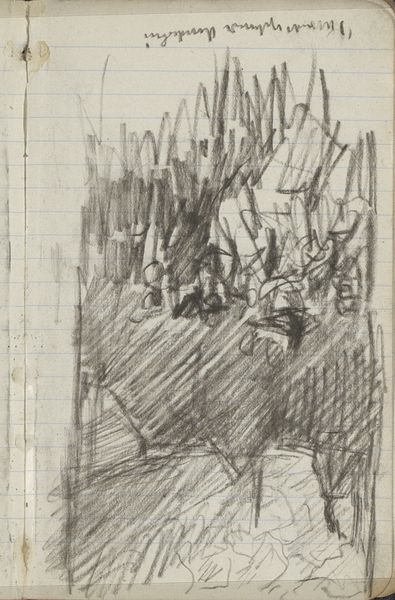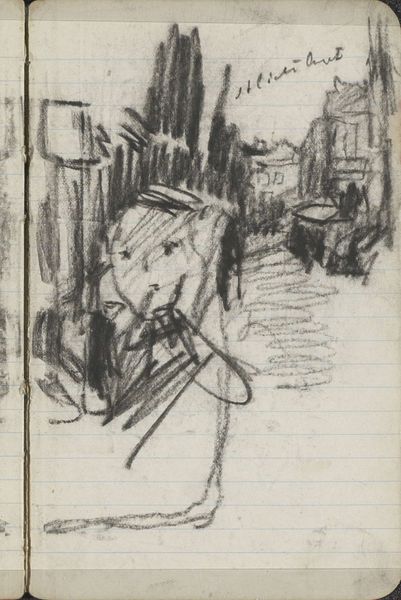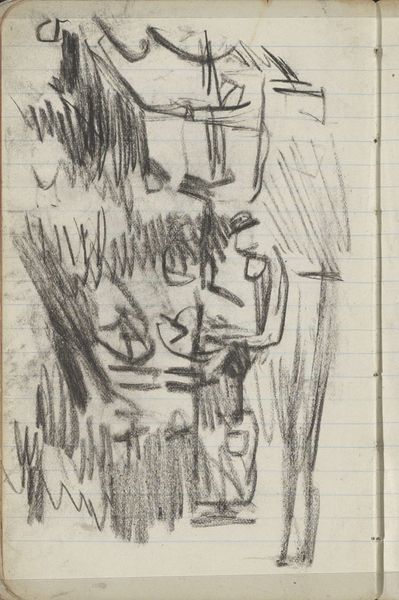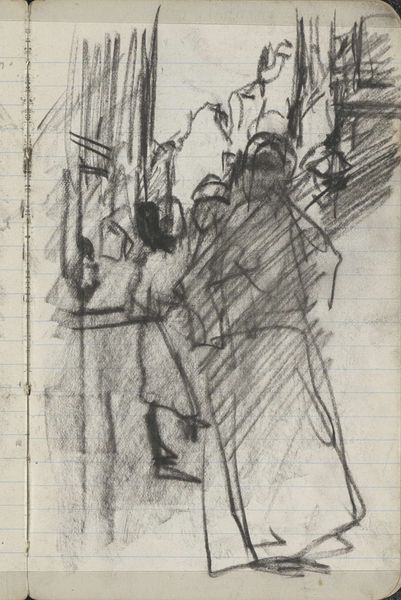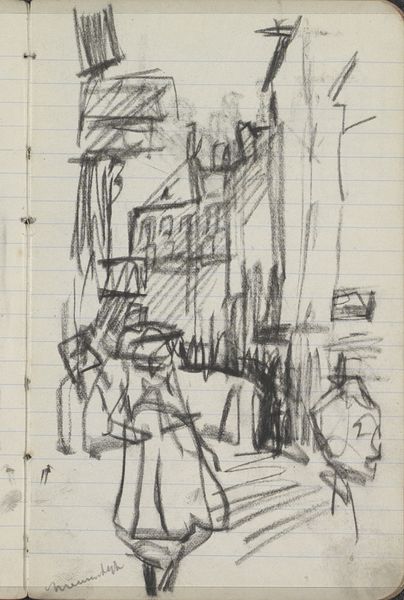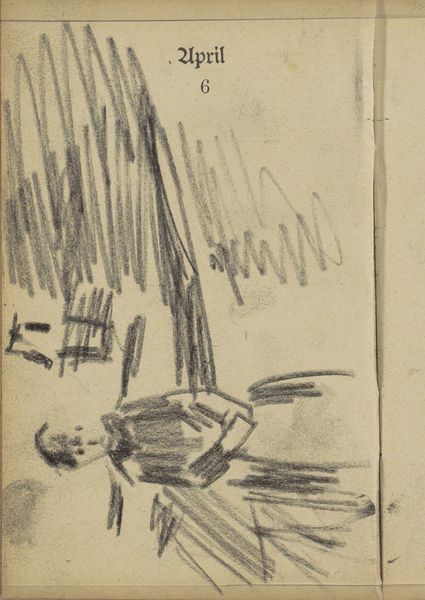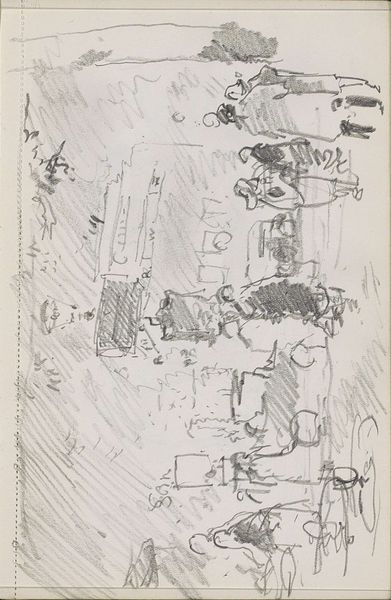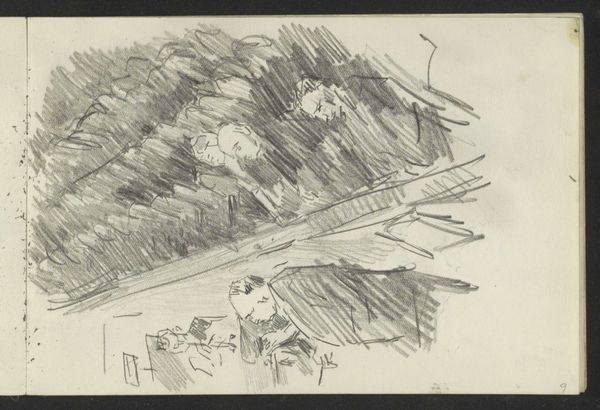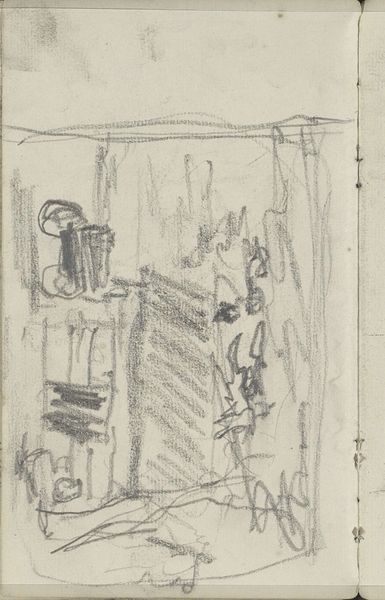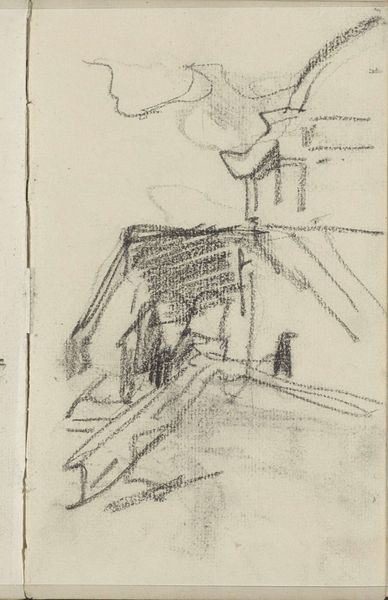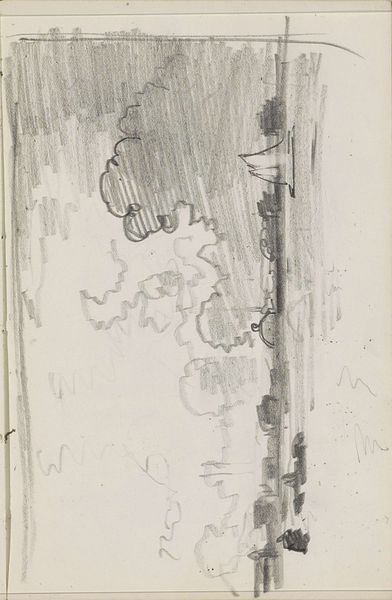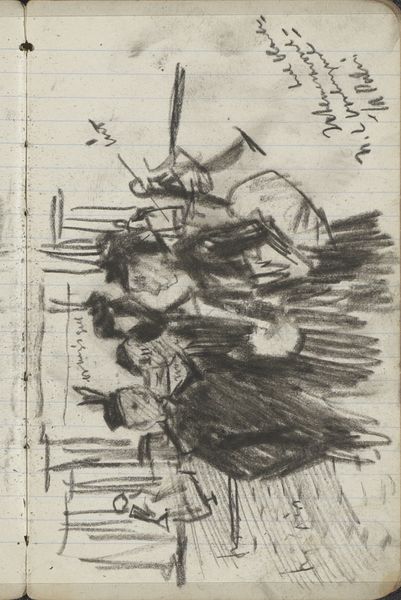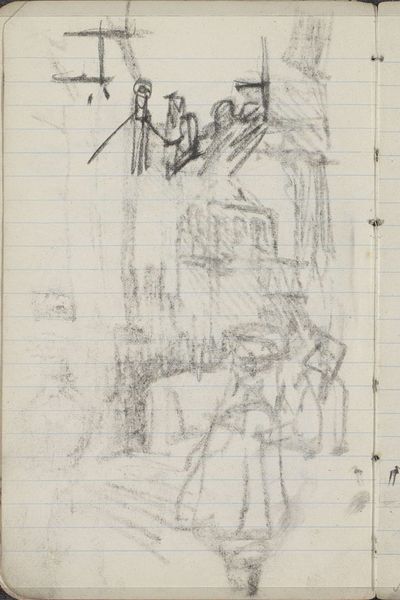
Copyright: Rijks Museum: Open Domain
Editor: So, this is George Hendrik Breitner's "Gezicht op een straat in Amsterdam," made between 1893 and 1894. It looks like a pencil drawing, kind of a rough sketch, almost moody despite being a cityscape. What do you see in its composition? Curator: Initially, the rough and seemingly chaotic application of graphite obscures representational accuracy, instead foregrounding the drawing's materiality. The structural balance—the distribution of dark masses and blank space—reveals an underlying order, a play of contrasts. Do you perceive how the linear elements define spatial depth, even in their hurried execution? Editor: I see it now, the varying line weights do suggest depth. But is there anything to interpret, since it's a sketch? Curator: The 'sketch' should not preclude analysis. The linear network, observe its density. The surface has varying textures where Breitner has worked and re-worked the material. Note also the formal tension here, where areas of high detail meet stark simplification. It offers insight into the artist’s process. Editor: That makes sense. So, focusing on the artist's process, how the piece is made rather than what it literally depicts, opens it up to new interpretations? Curator: Precisely. Understanding its formal properties—line, texture, and the organization of space—provides a comprehensive view of this study. What have you gained through this examination? Editor: I’ve learned that even incomplete sketches can be analyzed for their form and structure, and that these can reveal just as much as a finished work. Curator: Indeed. And I have relearned that these 'snapshots' from sketchbooks remind us to reconsider and see art with fresh eyes.
Comments
No comments
Be the first to comment and join the conversation on the ultimate creative platform.
